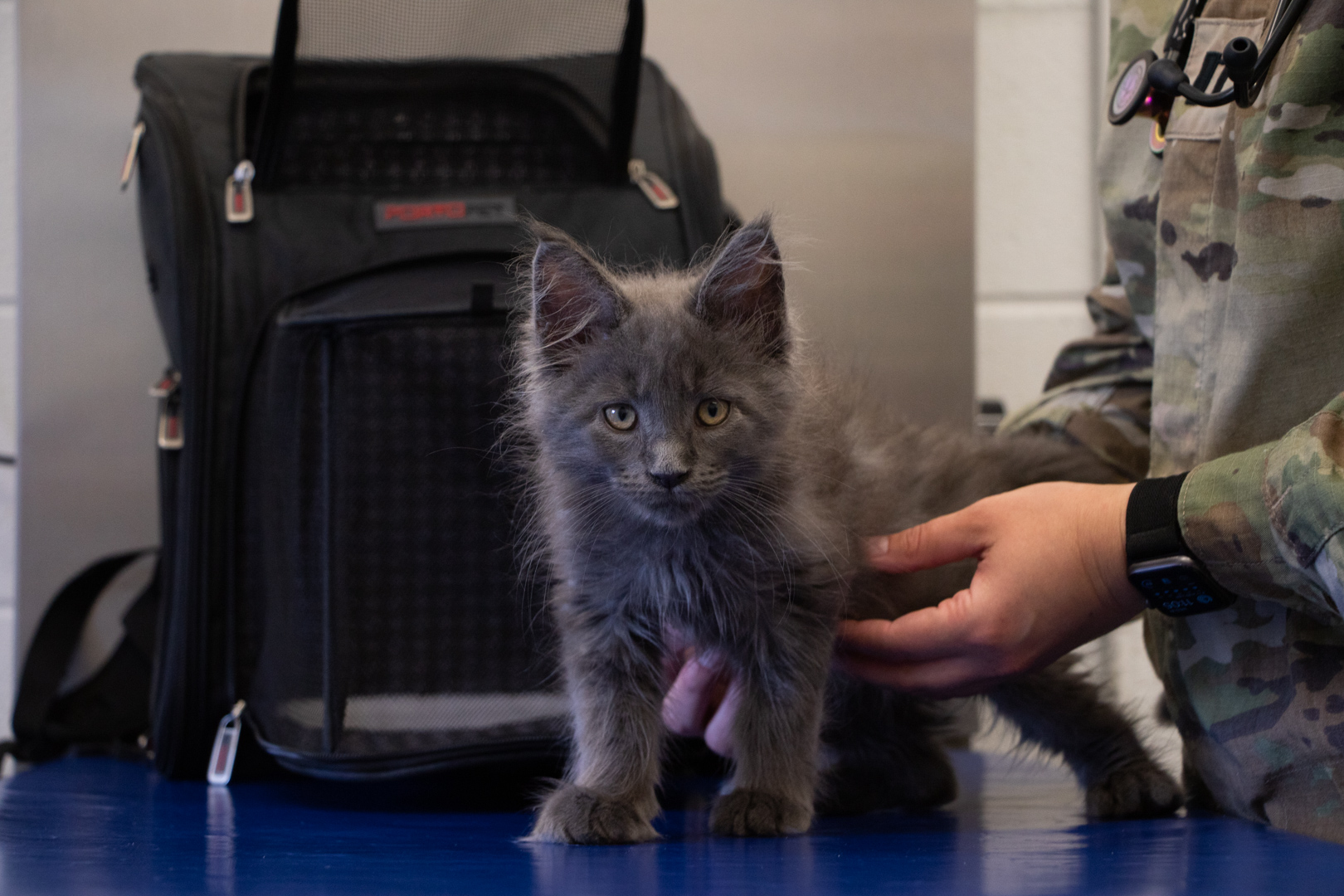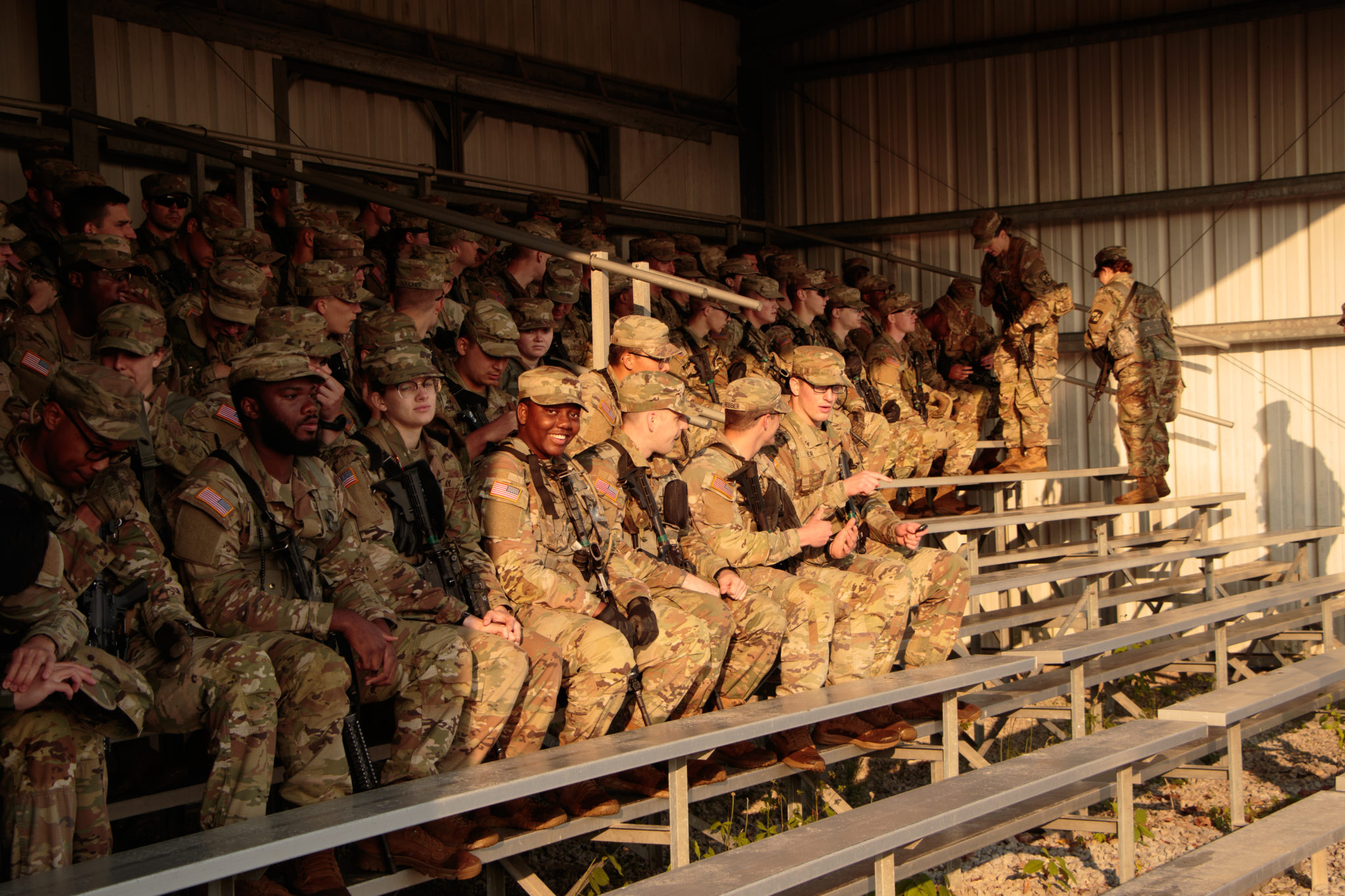To provide cohesion of the medics coming from all over the Army to provide medical coverage for CST, Fort Knox medical personnel practiced casualty evacuation (CASEVAC).
“We wanted to test our response time to get those casualties evacuated,” said Maj. Justin Hell, Cadet Command Medical Planner for CST. “That way during Cadet Summer Training if a Cadet has a serious injury or a cadre member, we are able to quickly respond and get them to the next level of care safely…”
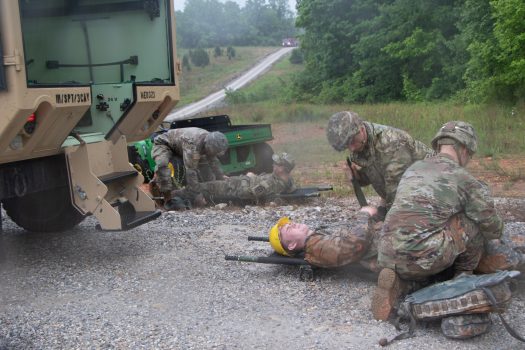
During these training events the command have people who act as victims of van and car rollovers who have been ejected or injured. Special effects make up is used on the role-players to make the scenes as realistic as possible.
“You never know how a patient is going to be,” said Spc. Kaleb Wilkerson, a medic at Task Force Med, who played the injured. “A patient can be calm as a cucumber or they can be combative. Today I was trying to mess them up… I was trying to give them the worst situation they can possible have… Just make it the worst-case scenario so they can do better in the real scenario.”
When it comes to providing medical attention out in the field having practical experience is vital.
“An exercise like this is very important in order to desensitize the shock factor,” said Sgt. Severiano Sosa Hernandez of 3CR, Muleskinner, Scalpel Troop, a medic, serving as a TC driver for the evac platoon. “As well as when you have that adrenaline going, as well as you can kind of go through the muscle memory so when you don’t have to initially think and waste time you can just go off instinct and essentially do what you have been training so that way they train how they fight they see the injuries and they can train and actually perform…”
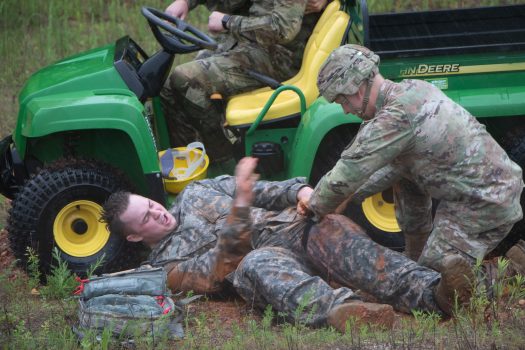
Depending on where the site of the incident is, depends on who is called. Since cell reception is sometimes reduced in training areas many of the cadre have radios where they can call out.
“So, their first response is to notify range control,” said Hell.
Once the call gets to Range Control they basically take it from their notifying the proper people, but there is a process to how they call.
“A Nine Line is a process that we use to provide information when we are calling up a medical evacuation,” said Hell. “Time, number of patients, location of the injury, the patient’s status and that key information helps the ambulance or whoever is coming to respond to make sure they have the, one, enough platforms to evacuate the casualties and the right platforms for the type of casualties.”
Though when the medics get there in the Field Litter Ambulance (FLA), their purpose is to do what needs to be done in order to get the injured stabilized.
“So, the medics go through their tactical combat casualty care. They are there really to sustain the patient until the EMS arrives,” said Hell.
Once the EMS and Fire Department arrives the person in charge shifts.
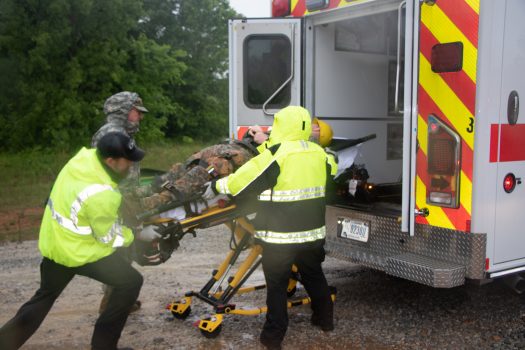
“When we initially get on seen, the first thing we want to do is establish incident command,” said Jacob Geer, Assistant Chief of Training for Fort Knox Fire Department.
“Try to bring in as much information as we can and determine if we need more assets or if we have more coming, and kind of take the chaos away from the scene and put some organizational structure in there so everyone is not requesting stuff and it goes through one command.”
Once a command staff is structured, typically the medics follow the lead of the paramedics on the EMS, the situation is then assessed.
“We do a scene size up to see who is more critical so they would go first,” said Cindy Hudson, a paramedic called to the incident. “We would call for additional trucks if we need them, but with the medics here we have medical personnel that can take care of one…”
Cadets will be coming in and out all summer and in case of an emergency the Task Force Medical teams here at Fort Knox want to be ready.

